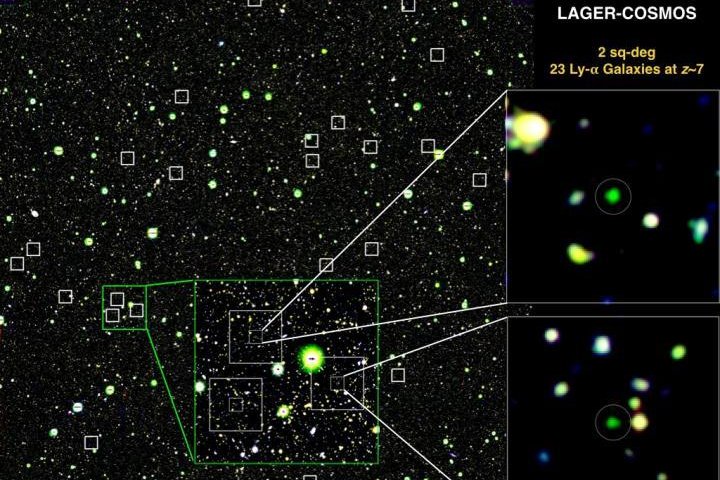Scientists are using the Dark Energy Camera on the Victor M. Blanco Telescope to survey some of the earliest galaxies in the universe. Photo by Zhenya Zheng/SHAO/Junxian Wang/USTC
July 26 (UPI) -- New observations of faraway, early galaxies are helping astronomers pinpoint the birth of the earliest stars and galaxies, as well as the reionization of the cosmos. The observation were captured by the Dark Energy Camera, an instrument on the Victor M. Blanco Telescope in Chile.
The reionization of the universe occurred between 300 million years and one billion years after the Big Bang, but astronomers haven't been able to determine exactly when and how quickly it happened.
The phenomenon describes the ionization of hydrogen gas as the first stars, quasars, galaxies and black holes came into existence. Prior to the reionization, the universe was without distinct light sources. Diffuse light dominated, and most radiation was absorbed by neutral hydrogen gas.
But as stars, galaxies and other cosmic objects ionized the gas, a full range of wavelengths were able to penetrate the intergalactic voids.
"Before re-ionization, these galaxies were very hard to see, because their light is scattered by gas between galaxies, like a car's headlights in fog," Sangeeta Malhotra, an astronomer at Arizona State University, said in a news release. "As enough galaxies turn on and 'burn off the fog' they become easier to see. By doing so, they help provide a diagnostic to see how much of the 'fog' remains at any time in the early universe."
The Dark Energy Camera, or DECam, allows astronomers to survey the red end of the visible spectrum, as well near-infrared light, from the early universe. Researchers used a filter to make the DECam even more sensitive to the earliest galaxies in the cosmos.
"The combination of large survey size and sensitivity of this survey enables us to study galaxies that are common but faint, as well as those that are bright but rare, at this early stage in the universe," said Malhotra.
Early results from the DECam survey -- part of the "Lyman Alpha Galaxies in the Epoch of Reionization" project -- suggest the majority of the reionization process was triggered by galaxies born when the universe was just 800 million years old.
As scientists find and analyze more early galaxies, they will be able to build a more accurate timeline of the epoch of reionization.















